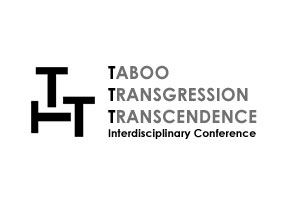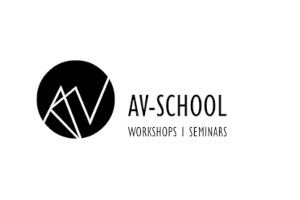Summary
The evolution of Digital Doubles (DD) and Digital Twins (DT) has significantly influenced how we model, analyze, and interact with virtual representations of physical spaces. While these digital constructs have traditionally served as static replicas of real-world environments, their inability to evolve dynamically has posed limitations in various fields, particularly in architecture. However, the integration of artificial intelligence (AI) has introduced the concept of digital mutations, transforming DD/DTs into adaptive, evolving entities capable of responding to environmental, behavioral, and systemic changes. Unlike conventional models that merely mirror physical spaces, AI-driven digital twins leverage autonomous computational processes, sensorial inputs, and self-organizing mechanisms, allowing them to transcend the limitations of static representation.
Objective
The primary objective of this research is to investigate the transformative impact of AI on digital twins, specifically through the lens of digital mutations. It seeks to analyze how AI workflows can redefine the nature, function, and representation of digital spatial models, moving beyond static duplication to embrace a more evolutionary and interactive framework.
A key focus is the representational dimension of these AI-driven transformations. While traditional DD/DTs aim to reproduce physical environments with precision, AI-enhanced digital twins engage in semantic flexibility, reshaping their symbolic and material attributes over time. This research reflects on how these evolving models foster a new form of spatial intelligence, one that is not merely concerned with accuracy but with adaptability, interaction, and the generation of new spatial narratives.
Method
This study adopts an interdisciplinary qualitative approach, drawing from architecture, digital theory, AI-driven spatial modeling, and representational studies. The methodology involves the curated selection of well-defined architectural elements in two-dimensional representational domain. Through categorization, this process facilitates the emergence of archetypal constructs across architectural space and abstract symbolic-semiotic systems. Subsequent extraction of these archetypal forms—via computational masking techniques—generates a variability corpus, which serves as the foundational symbolic substrate for generative modeling. This phase is operationalized through computer-vision (CV) frameworks, which isolate foundational morphological characteristics (encoded as masks) to establish parametric boundaries for subsequent AI-driven spatial generation. The resulting methodology can be expanded into generalized form recognition and reinterpretation of spatial configurations.
One key aspect of the research is a comparative analysis between traditional digital twins and their AI-enhanced counterparts. By examining real-world applications in architecture and interactive digital spaces, this study identifies the specific ways in which AI enables self-adaptation, interactive agency, and evolutionary design within digital environments. This approach is complemented by an exploration of sensorial feedback mechanisms, which allow AI-driven digital twins to respond to environmental stimuli.
This research introduces ambiguity through AI-driven hallucinations. By implementing controlled freedom in latent space navigation, this approach facilitates instances of transformational and combinational creativity. This speculative perspective allows for the exploration of high-dimensional design solution spaces within the generation of DTs, potentially leading to the emergence of new archetypes. Concurrently the implementation of a modular workflow ensures authoritative control over the generation. The symbiotic interplay between human intentionality and computational logic form semantic hybrids -synthetic constructs that mediate the integration of analog and digital semiotic systems.
Additionally, this study engages in a theoretical synthesis of digital mutations as a broader conceptual shift in digital representation. It situates AI-driven transformations within the context of performative spatiality, examining how digital models transform from memetic representations, to active, generative participants in spatial experience. This reflexive perspective allows for a deeper understanding of the ontological and experiential implications of AI-integrated digital spaces.
Conclusion
The integration of AI into DD/DTs marks a significant shift in how digital environments are conceptualized and utilized. Moving beyond static replication, these models evolve through continuous feedback loops, adaptive learning, and semantic reinterpretation, making them increasingly context-aware, performative, and autonomous. This transformation redefines architecture and spatial design, enabling dynamic, intelligent spaces that respond to their surroundings.
A key outcome is the blurring of boundaries between representation and embodiment. AI-driven digital twins generate new spatial possibilities. This fosters a new epistemology of space, where digital environments act as autonomous agents capable of self-modification rather than passive representations.
Ultimately, digital mutations signify more than technological advancement—they represent a fundamental rethinking of spatial intelligence and representation. By leveraging AI, digital twins become active agents of spatial change, bridging the physical and virtual into a seamless, interactive continuum that redefines the future of digital spatiality.
Magdalini Grigoriadou is a PhD architect (UPM, Spain, 2014) exploring the intersection of space, time, and the human body in architectural imagination. Her research investigates the impact of digital technologies on embodied experiences and the design of personalised and adaptable spaces. Through projects like "Sparágmata" (Mexico, 2017) "Disembody" (Greece, 2021) and "Hybrid Postbodies" (2022) she delves into themes of nostalgia, fragmentation, and the emergence of embodied hybrid digital-physical spaces. By employing virtual environments and performance, she challenges traditional notions of space and architecture, advocating for a more embodied, dynamic, and vibrant approach to spatial experience.
Back





